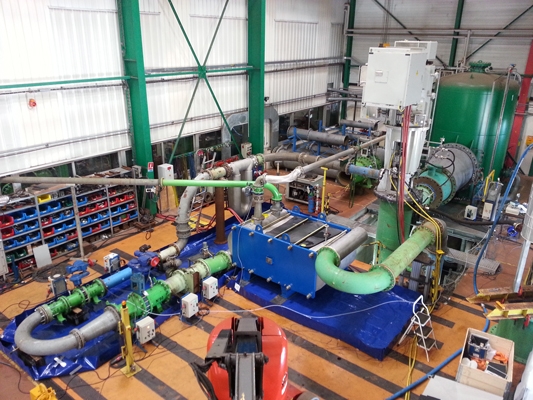Testing a staged pump weighing more than 7 metric tons in real conditions with a liquid which is 1,000 times as viscous as water: this is the challenge met by Eureka Pumps, a manufacturer of largedimension pumps.
Confirm calculations
In order to size their equipment, the Norwegian specialists usually use performance curves obtained by testing equipment in water and subsequently corrected with empirical correlation formulas. However, for pumps intended for an offshore platform off the coasts of Canada, “the three formulas used gave rise to results in terms of power requirement which varied by more than 20%, explains Cato Knutsen, senior engineer in charge of the project at Eureka Pumps. Therefore, the future field operator demanded that we carry out tests in real conditions in order to make sure that the extraction device would work properly when started.”
Two types of tests
As Eureka Pumps was unable to perform the tests by itself, it entrusted two types of tests to Cetim experts: multi-physical tests with a viscosity of 1,075 centipoises (1,000 times the viscosity of water) and a flowrate of 830 m3/h, as well as a “cold start” test with a flow rate of 0 to 254 m3/h and a viscosity of 3,075 centipoises. The objective was two-fold: determining the actual performance curves of the pump and its behaviour at the selected operating point, and making sure that the equipment item will start pumping in extreme cold weather. The challenges consisted in designing a suitable loop and finding a type of fluid with characteristics similar to those of crude oil but not hazardous, in order to perform the tests. The tests lasted 10 days and proved that the pump was correctly dimensioned. But “they showed that some current correlation formulas were not reliable enough when density becomes very significant. For this kind of extreme cases, a test in real conditions is necessary. We will repeat this without any hesitation if we have the opportunity to do so”, concluded Cato Knutsen.



